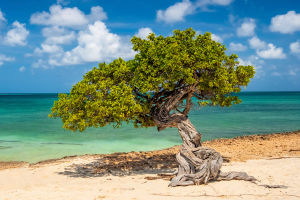Cacti, often synonymous with arid landscapes and desert scenes, come in various shapes and sizes. Among the most iconic and awe-inspiring are the tall cacti, towering sentinels of the desert that seem almost to touch the sky.
These impressive plants, primarily found in the arid regions of the Americas, not only captivate the imagination but also play crucial roles in their ecosystems. Here’s a closer look at these towering marvels of nature.
1. Height and Longevity
One of the most striking features of tall cacti is their impressive height. The Saguaro cactus, native to the Sonoran Desert in the southwestern United States and northwestern Mexico, can reach up to 40 feet tall. Remarkably, these giants grow slowly, adding only about 1 inch in height per year during their early decades. Some saguaros live for over 150 years, with the tallest specimens being several centuries old. This slow growth and impressive lifespan make them true icons of resilience and longevity.
2. Unique Adaptations
Tall cacti have evolved fascinating adaptations to survive in their harsh environments. Their ribbed structure helps them expand and contract like an accordion, allowing them to store and conserve water efficiently during rare rainfall events. Additionally, their thick, waxy skin reduces water loss and shields them from the intense desert sun. These adaptations are crucial for surviving in regions where rainfall can be sparse and temperatures extreme.
3. Ecological Importance
Tall cacti are more than just impressive plant specimens; they are vital to their ecosystems. They provide critical habitat and food for a variety of desert-dwelling animals. For example, the Saguaro cactus serves as a nesting site for birds such as the Gila woodpecker and the purple martin. The cactus flowers, which bloom in the spring, offer a nectar source for birds, bats, and insects. This interdependence highlights the ecological significance of tall cacti in maintaining the balance of desert life.
Cactus - Facts
Video by Occence Media
4. Reproduction and Pollination
The reproduction of tall cacti is as fascinating as their growth. Saguaros produce large, white flowers that bloom at night and close by midday. These flowers are primarily pollinated by bats, which are attracted to the blooms' sweet scent. During the day, the cactus flowers also attract bees and other insects, ensuring that a wide range of pollinators contribute to the cactus's reproductive success. After pollination, the cactus develops bright red or pink fruit known as "saguaro fruits," which are consumed by various desert animals and aid in seed dispersal.
5. Cultural Significance
Tall cacti have woven themselves into the cultural fabric of the American Southwest and beyond. They are prominent symbols in Native American art and traditions, representing endurance, strength, and the spirit of the desert. In modern times, they feature prominently in popular media and serve as emblems of the rugged beauty of desert landscapes. Their distinctive shape and size have made them a favorite subject in photography, art, and literature, cementing their status as icons of the natural world.
Lykkers, in essence, tall cacti are not just botanical curiosities; they are dynamic, living symbols of adaptation and resilience. Their grandeur, combined with their ecological and cultural importance, makes them a remarkable subject of study and admiration in the natural world.


